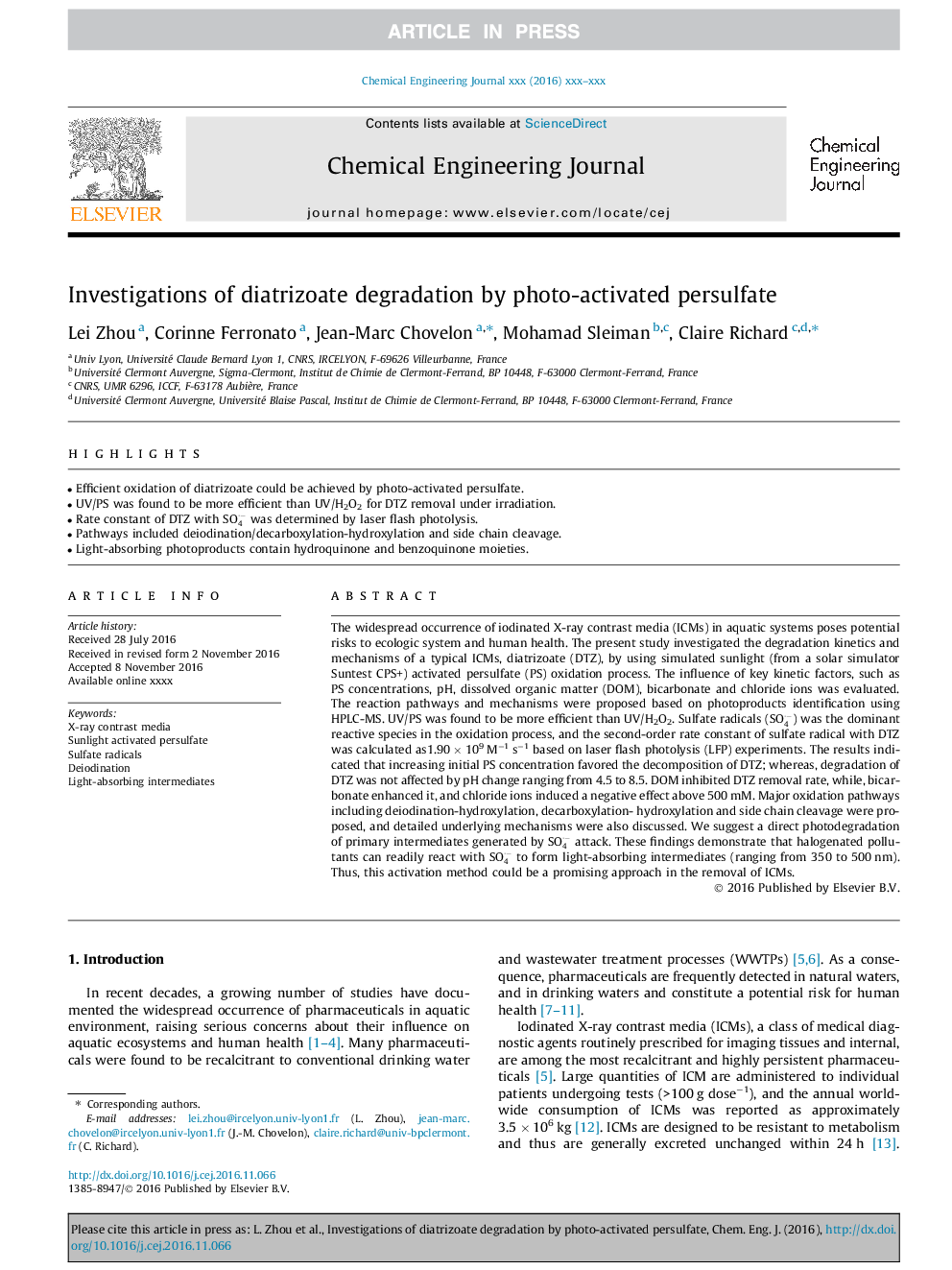| Article ID | Journal | Published Year | Pages | File Type |
|---|---|---|---|---|
| 4763402 | Chemical Engineering Journal | 2017 | 9 Pages |
Abstract
The widespread occurrence of iodinated X-ray contrast media (ICMs) in aquatic systems poses potential risks to ecologic system and human health. The present study investigated the degradation kinetics and mechanisms of a typical ICMs, diatrizoate (DTZ), by using simulated sunlight (from a solar simulator Suntest CPS+) activated persulfate (PS) oxidation process. The influence of key kinetic factors, such as PS concentrations, pH, dissolved organic matter (DOM), bicarbonate and chloride ions was evaluated. The reaction pathways and mechanisms were proposed based on photoproducts identification using HPLC-MS. UV/PS was found to be more efficient than UV/H2O2. Sulfate radicals (SO4·-) was the dominant reactive species in the oxidation process, and the second-order rate constant of sulfate radical with DTZ was calculated as1.90 Ã 109 Mâ1 sâ1 based on laser flash photolysis (LFP) experiments. The results indicated that increasing initial PS concentration favored the decomposition of DTZ; whereas, degradation of DTZ was not affected by pH change ranging from 4.5 to 8.5. DOM inhibited DTZ removal rate, while, bicarbonate enhanced it, and chloride ions induced a negative effect above 500 mM. Major oxidation pathways including deiodination-hydroxylation, decarboxylation- hydroxylation and side chain cleavage were proposed, and detailed underlying mechanisms were also discussed. We suggest a direct photodegradation of primary intermediates generated by SO4·- attack. These findings demonstrate that halogenated pollutants can readily react with SO4·- to form light-absorbing intermediates (ranging from 350 to 500 nm). Thus, this activation method could be a promising approach in the removal of ICMs.
Related Topics
Physical Sciences and Engineering
Chemical Engineering
Chemical Engineering (General)
Authors
Lei Zhou, Corinne Ferronato, Jean-Marc Chovelon, Mohamad Sleiman, Claire Richard,
